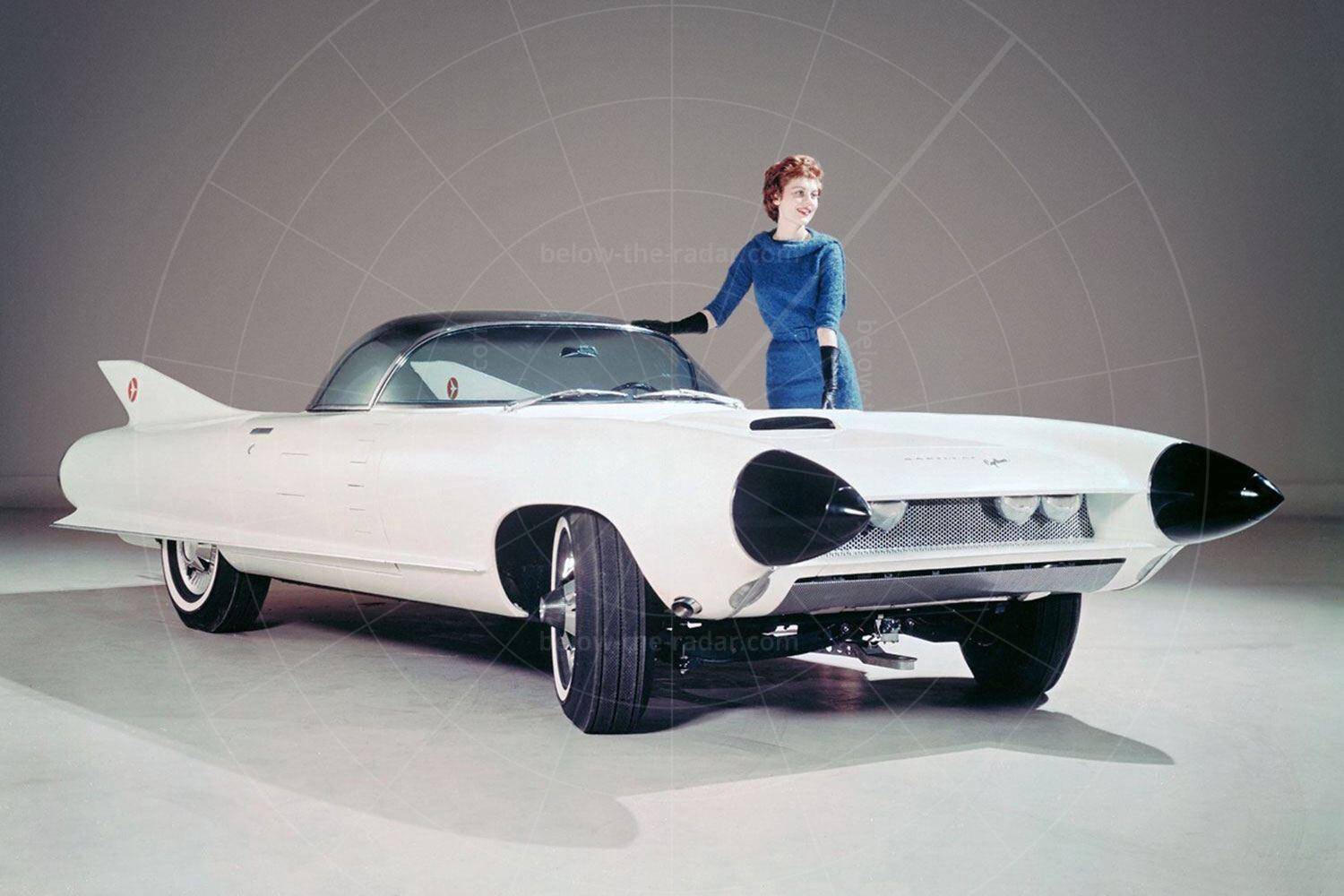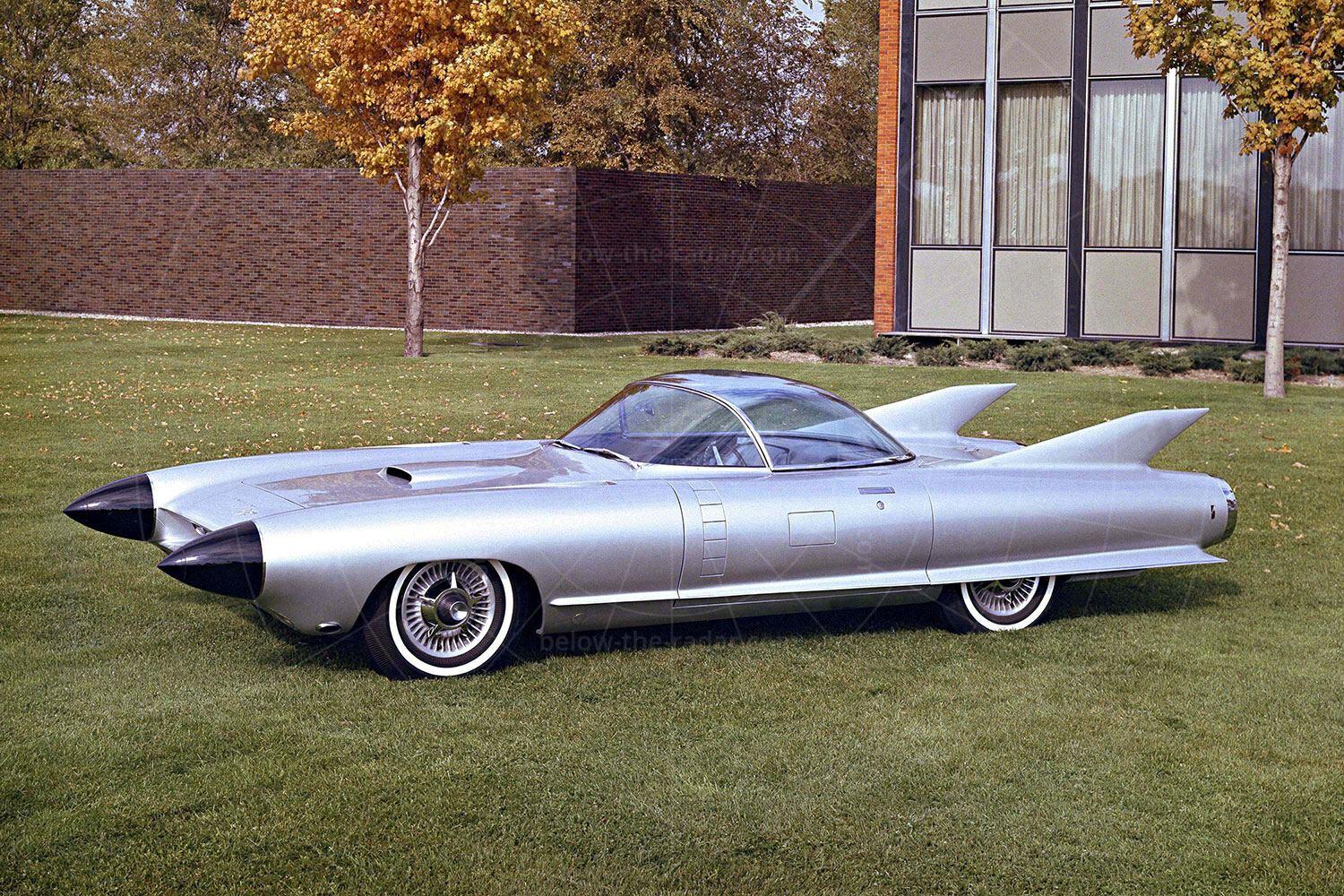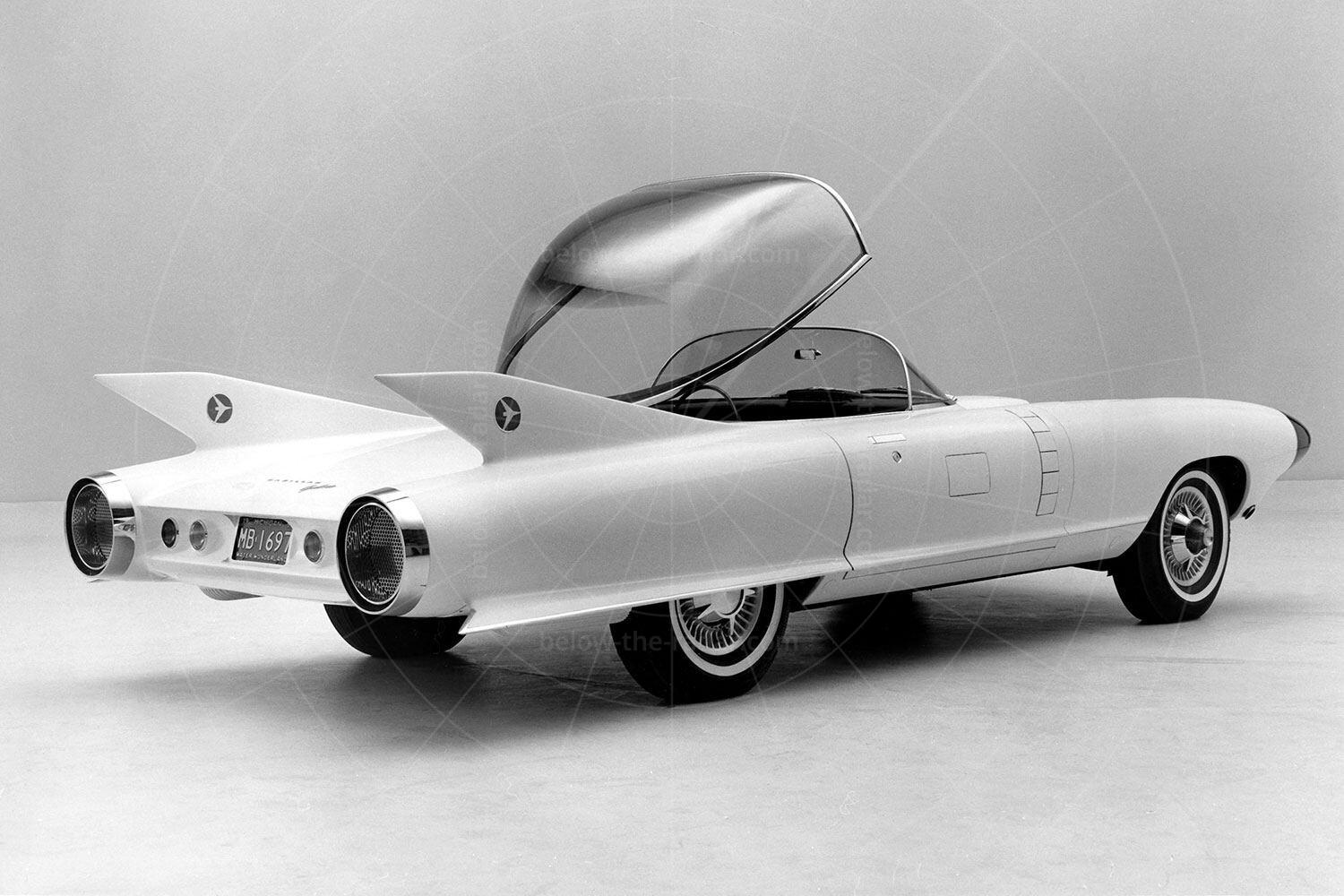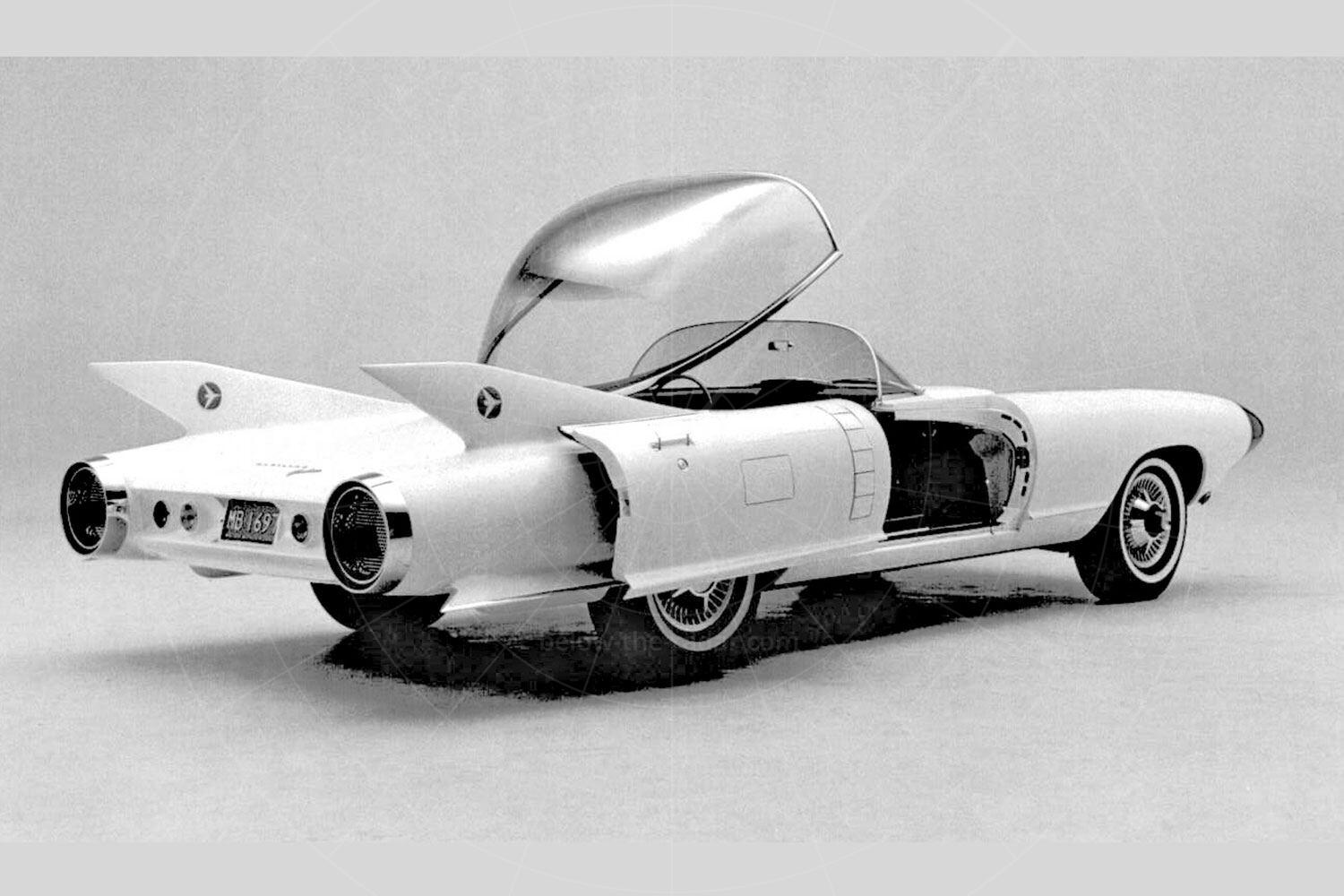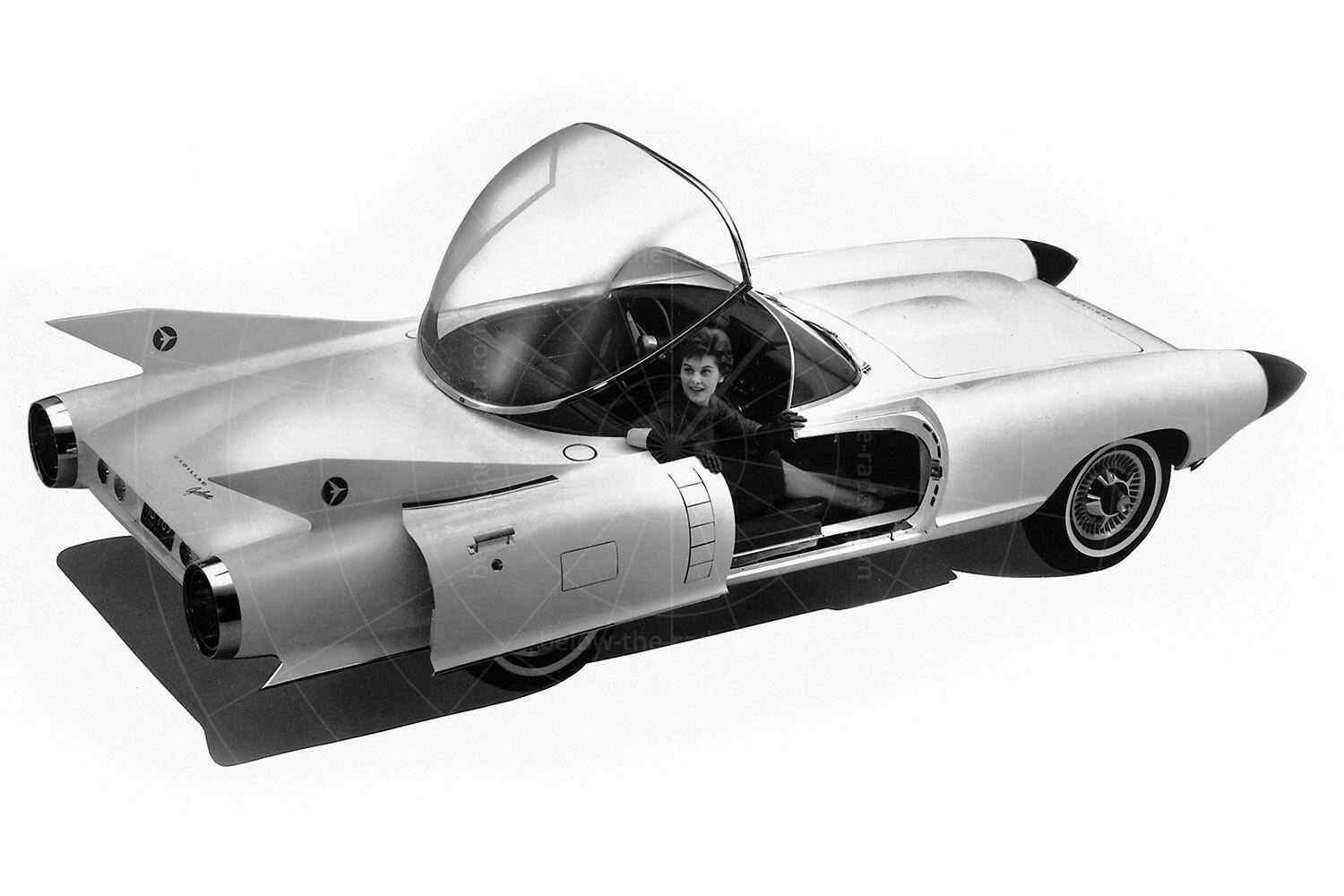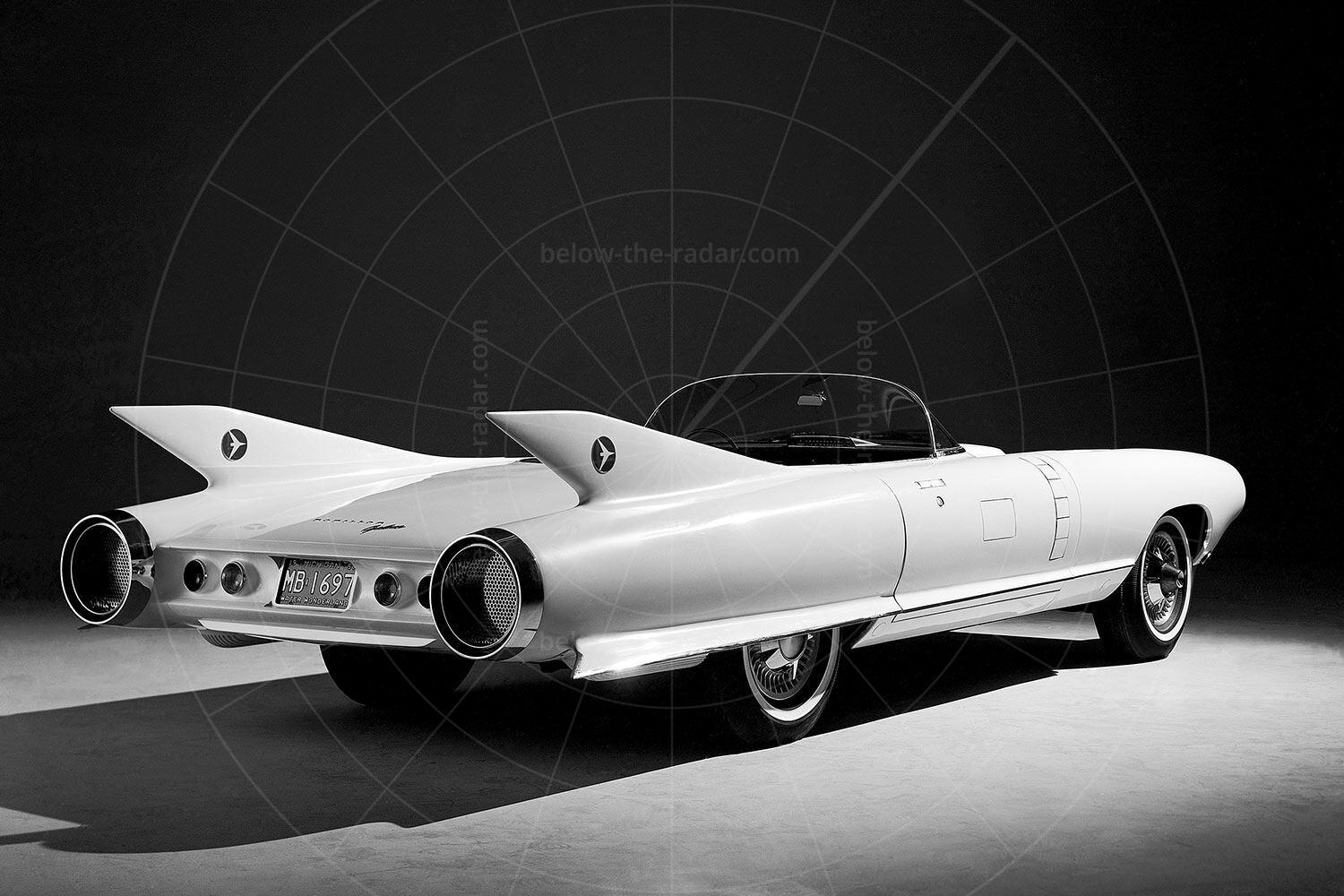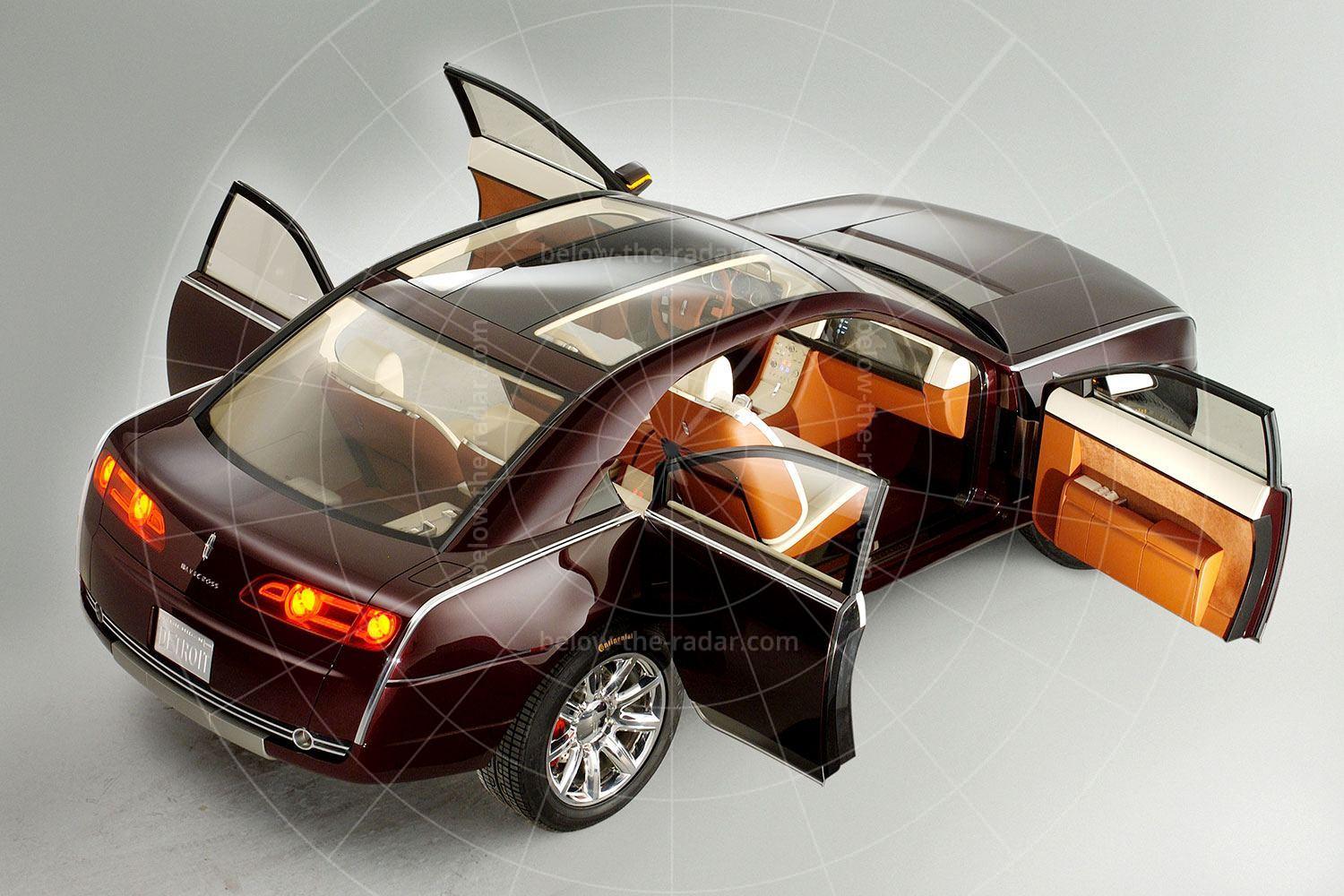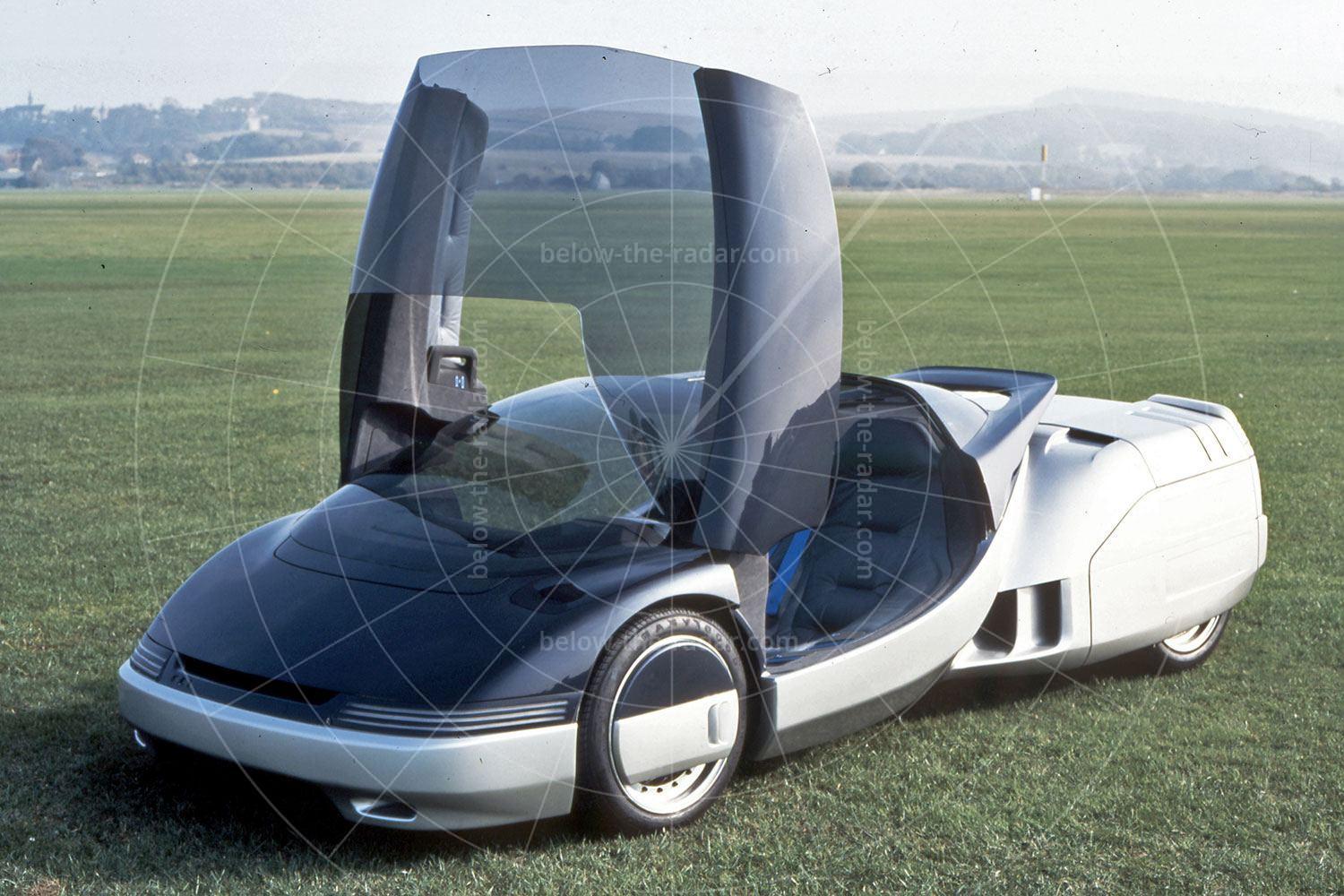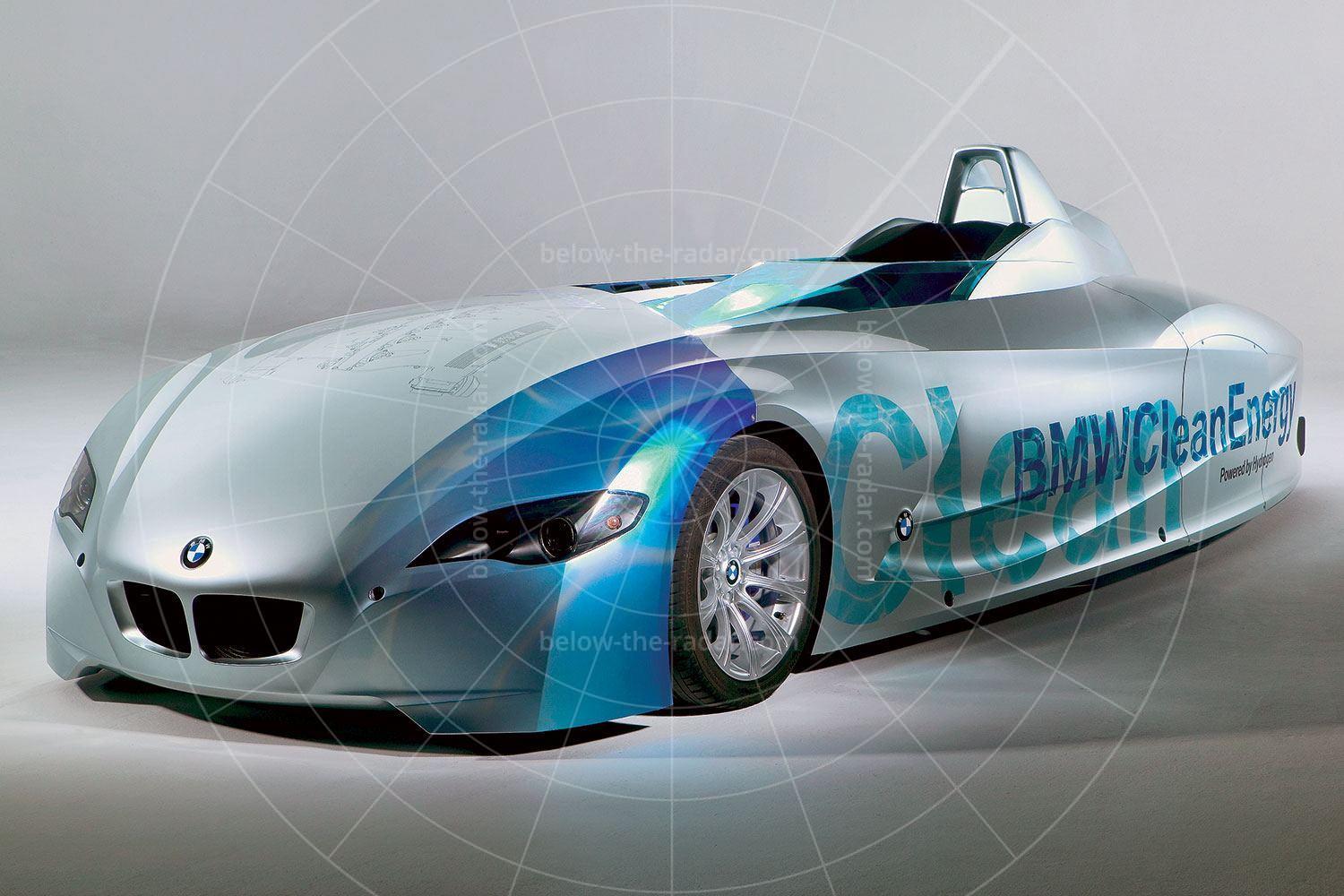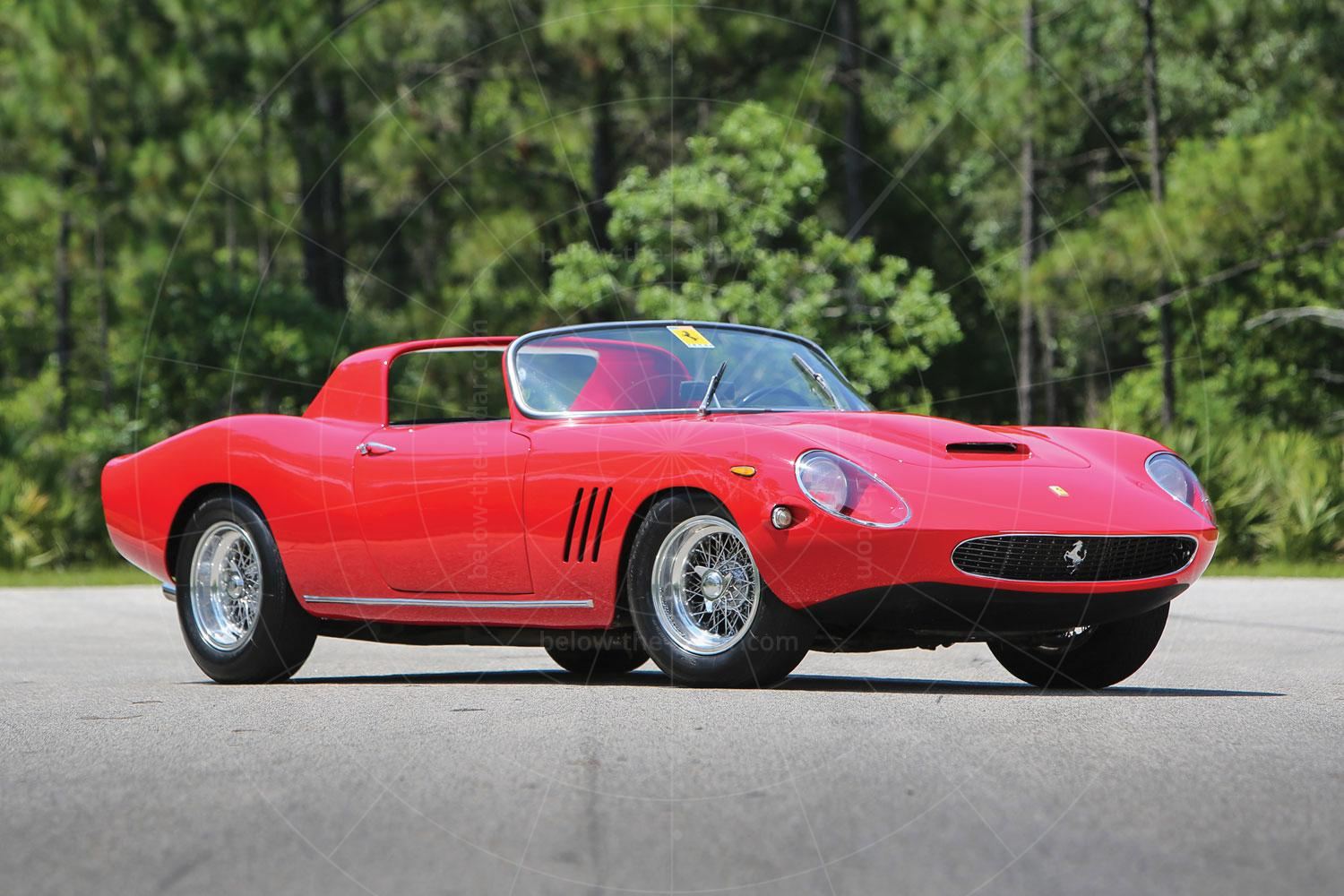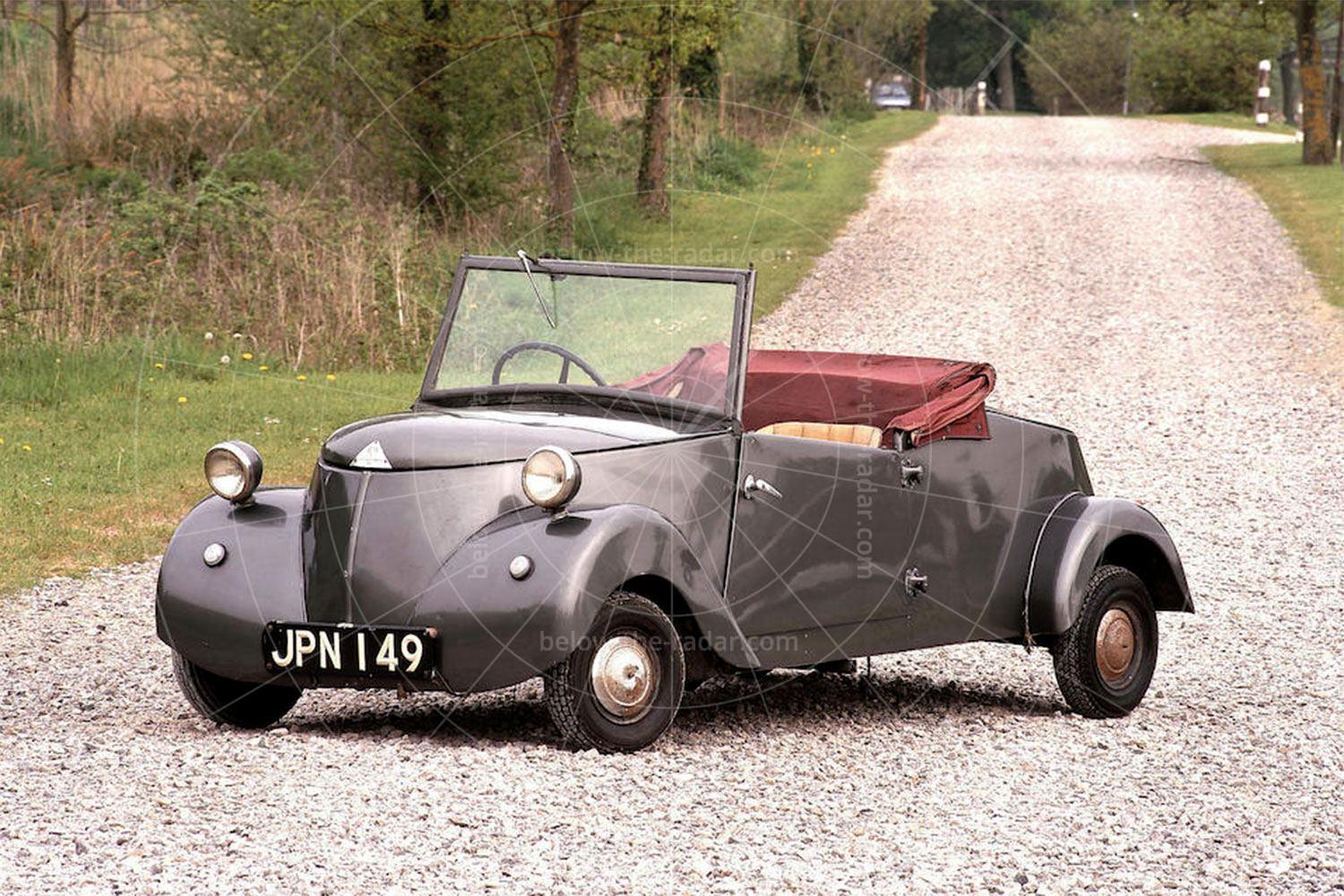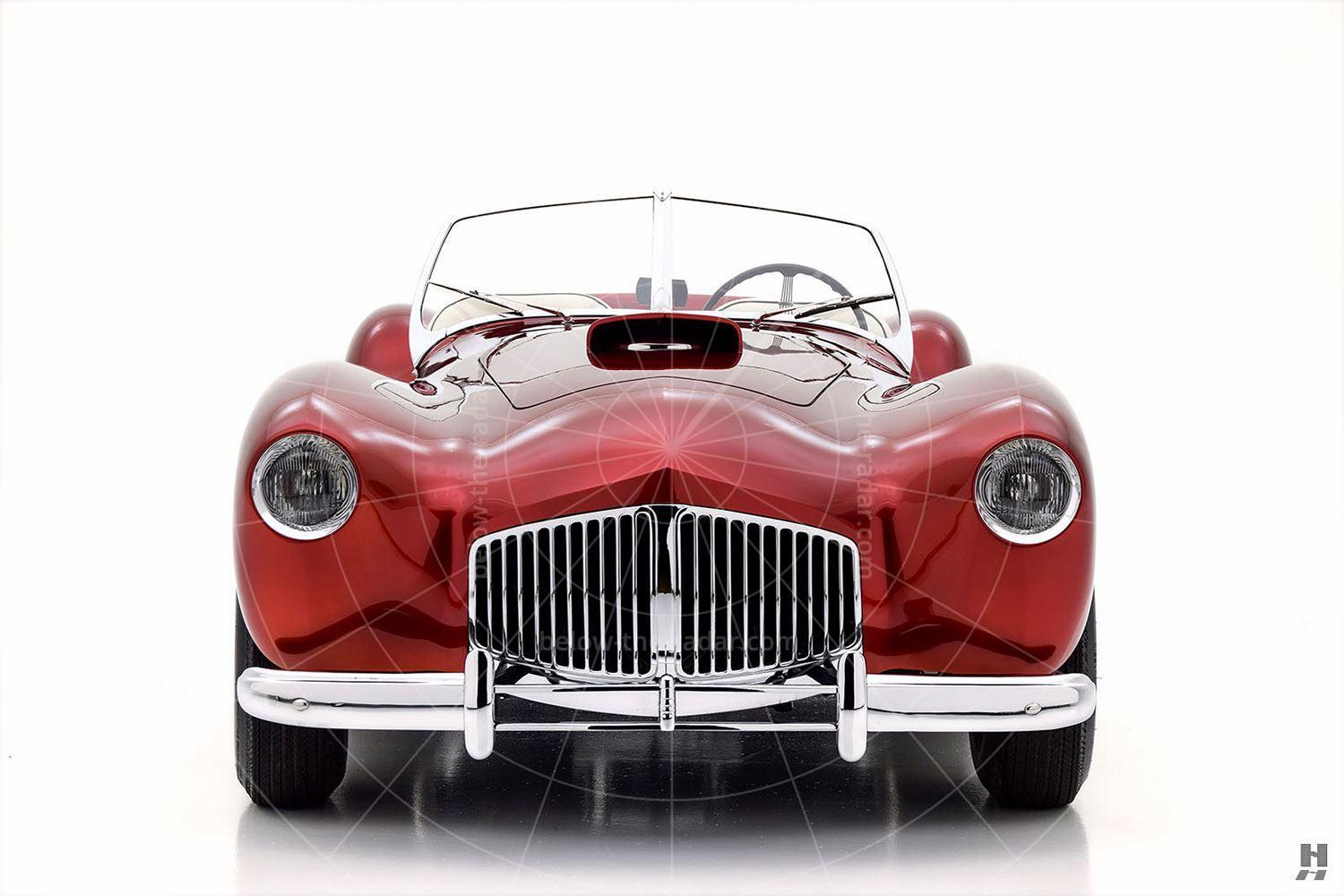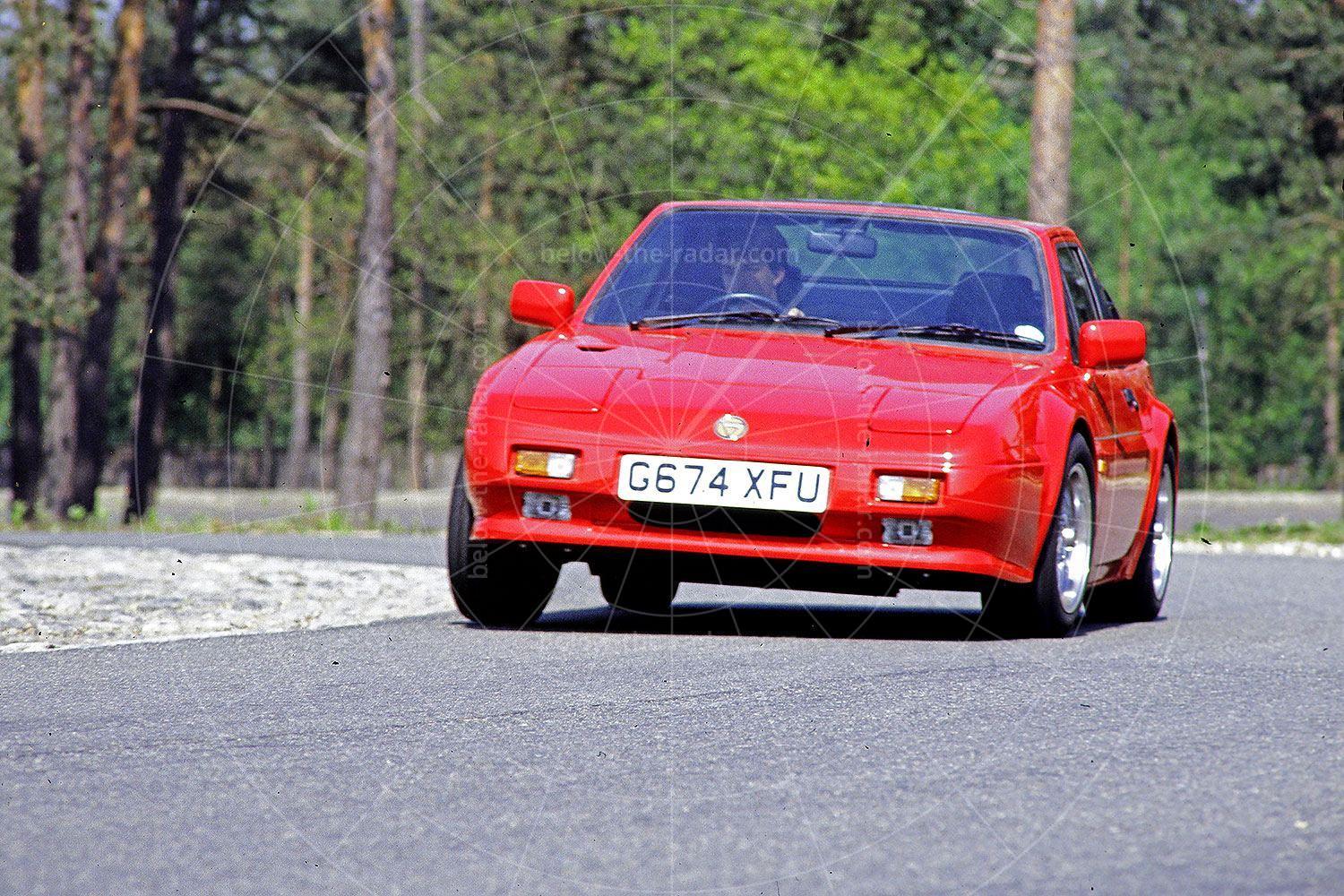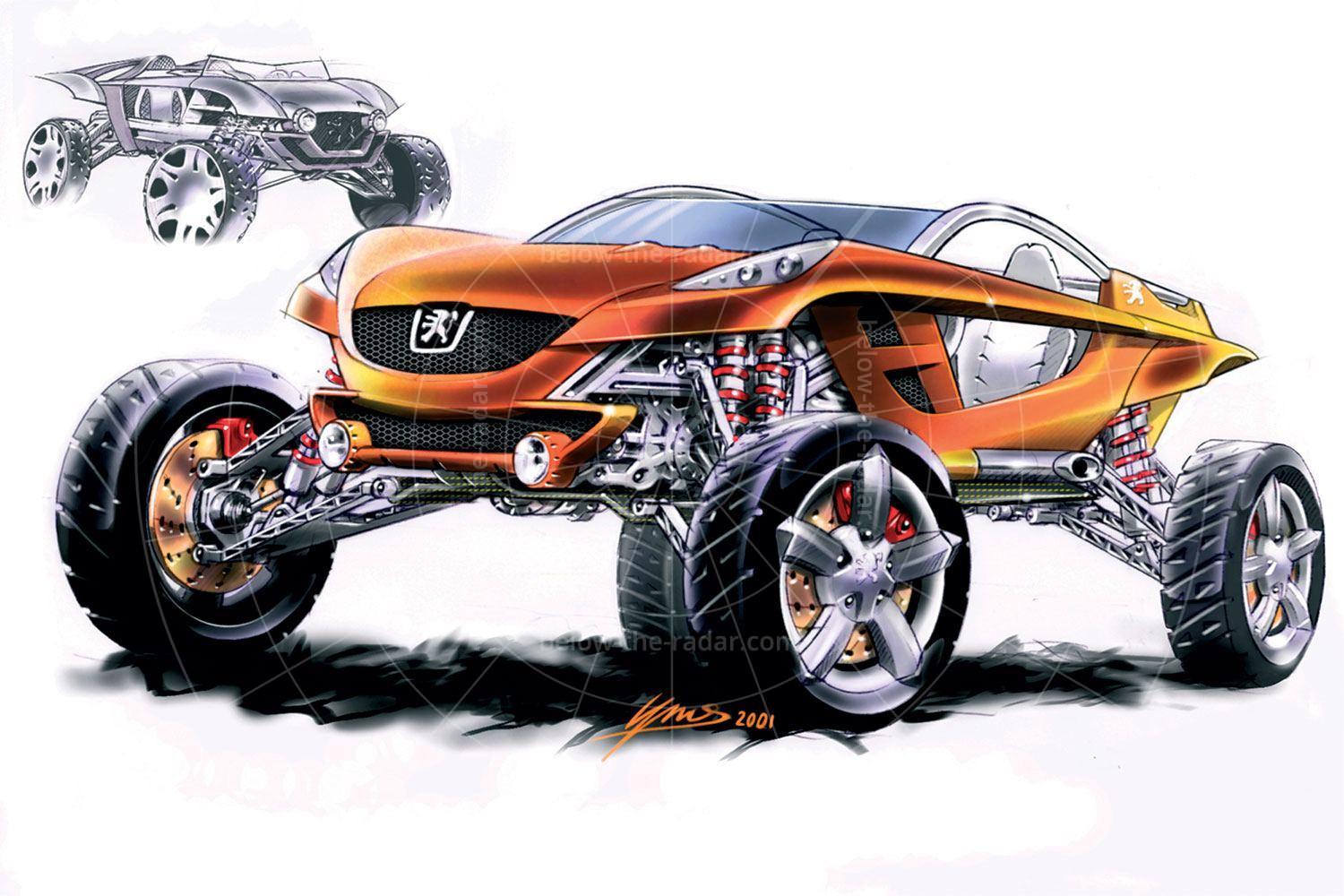The last dream car to be overseen by Harley Earl before he retired, the Cyclone XP-74 made its debut at the 1959 Daytona Speedway, and was yet another GM concept with a design inspired by jet aircraft. As a result there were two huge tail fins, and a glass canopy that could be stowed behind the two-seater cabin, under the rear clamshell, resting on an airbag. When a sensor in the console detected rain it automatically put up the one-piece bubble top, and to make sure that the Cadillac's occupants didn’t get too hot and bothered there was automatic climate control to keep the cabin cool.
The Cyclone XP-74's piece de resistance however, was the early version of a crash avoidance system that it incorporated. The nose design featured a pair of cones which were known as dagmars, and inside these were radar antennae which provided the driver with information on an object ahead, including distance to it and the car's stopping distance, both measured in feet.
As Cadillac said at the time: "Among its advanced engineering features is a radar-locating device, which scans the highway, and warns the driver electronically of objects in its path. Large, twin nose cones in the front of the car house the proximity-sensing units. They electronically alert the driver with both an audible signal and a warning light if an object is in its path."
Harley Earl retired in 1958 and his plan was for the Cyclone (internally codenamed XP-74) to be his parting shot. But the Cyclone wasn't ready in time, so by the time it was unveiled, Earl had already left GM, having entrusted the concept's design to long-standing GM designer Carl Renner.
Although the crash avoidance system didn't function, the Cyclone XP-74 was a runner, with its 325bhp 6388cc (390ci) V8 in the nose which drove the rear wheels via a three-speed Hydramatic automatic transmission and a two-speed differential to give six gears. The original plan had been to power the Cyclone via a gas turbine, as the name implies. But the technology wasn't available in time for the concept's debut so it got a conventional piston engine instead.
While the V8 was utterly conventional, there was a lot of innovation going on around it. Nowadays we take belt-driven accessories for granted, but back in the late 1950s this was far from the norm, so the fact that the air suspension and power steering pumps were driven by belt was truly groundbreaking. The air-con compressor, water pump and dynamo were also driven by belts, so instead of sitting on top of the powerplant they sat ahead of it, allowing a much lower bonnet line that would otherwise be possible.
Another innovation was an aluminium cross-flow radiator, which was cooled by a pair of fans, while that lower bonnet line was also aided by the fitment of a new design of low-profile four-barrel carburettor which lacked an air cleaner to reduce height even further; instead there was a filtered air scoop incorporated in the bonnet.
Despite the fitment of what looked like afterburners – as with so many concepts from the era – there were no exhausts at the back of the Cyclone. Instead the engine was fitted with a specially designed exhaust manifold that fed exit pipes positioned just ahead of the front tyres, so there was no need to accommodate an exhaust pipe down the entire length of the car.
The start point for the Cyclone XP-74 was a 1959 Cadillac Series 62 convertible, but its wheelbase was shortened to 104 inches. While the Cyclone could be driven with the canopy stowed away, when it was in place there was no facility to open any windows, so instead there were square ports in the doors which could be opened to provide some air flow. The doors themselves were opened and closed electrically, by sliding backwards and forwards.
The Cyclone XP-74 survives in GM's heritage collection, but not quite in the same form as originally seen in 1959. When Harley Earl was succeeded by Bill Mitchell at the end of 1958, the latter introduced sweeping changes. He was much more conservative than his predecessor so he reduced the height of the tail fins, moved the tail lights to the ends of the bumper and removed the problematic air suspension, opting for coil springs instead. At some point over the years the white paint has been switched to silver and the silver finish that was applied to the glass canopy peeled away. It was never replaced, so the Cyclone XP-74 looks a little less dramatic now than when it was unveiled in 1959 – but it still perfectly sums up the era in which it was born.
| Vital statistics | |
|---|---|
| Debut | Daytona, 1959 |
| Designer | Carl Renner, Harley Earl |
| Engine | Front-mounted, 390ci (6388cc), V8 |
| Transmission | 3-speed auto, 2-speed differential, rear-wheel drive |
| Power | 325bhp |

